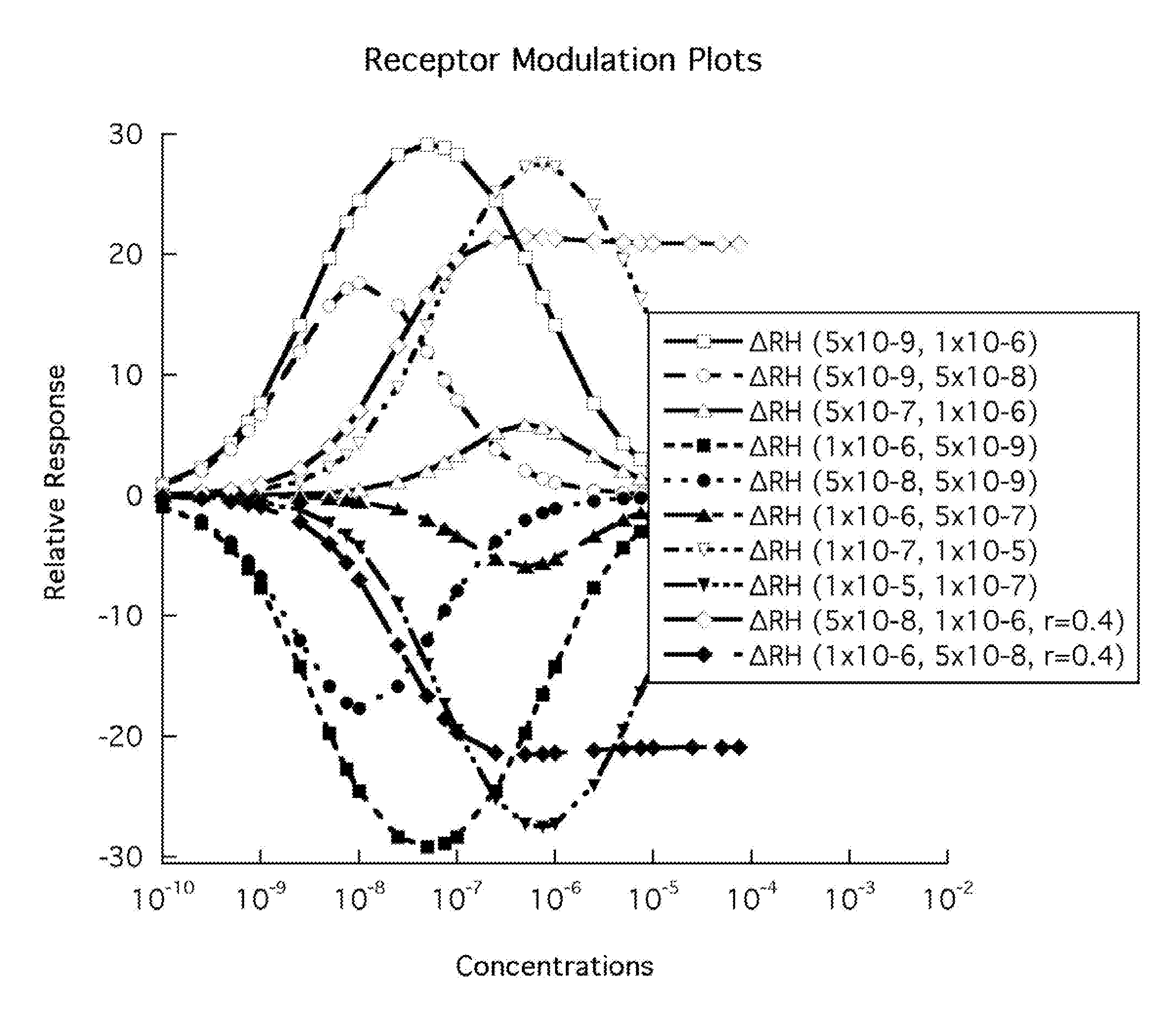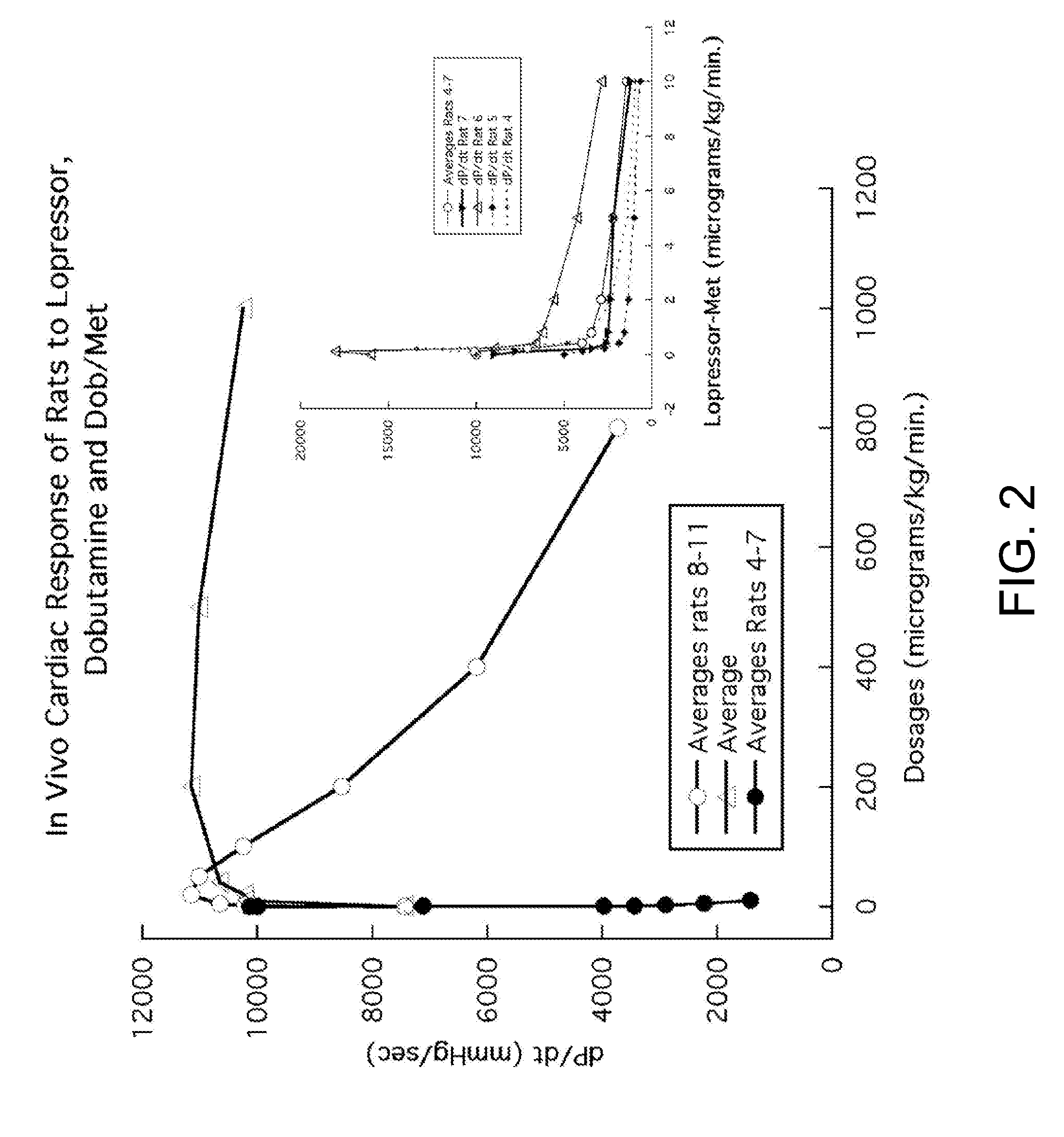Method For Determining Drug-Molecular Combinations That Modulate And Enhance The Therapeutic Safety And Efficacy Of Biological Or Pharmaceutical Drugs
a molecular combination and biological or pharmaceutical technology, applied in the field of drug combinations, compositions or formulations, can solve the problems of inability to control or modulate the varied interactions of biological and pharmaceutical drugs the overall scientific methodology to control or modulate the varied interactions using specific molecular combinations, etc., to improve the overall therapeutic safety and efficacy of individual drugs, enhance the safety and efficacy, and optimize the therapeutic response
- Summary
- Abstract
- Description
- Claims
- Application Information
AI Technical Summary
Benefits of technology
Problems solved by technology
Method used
Image
Examples
example 1
[0082]FIG. 1 shows some of the ranges of complex receptor responses that are described by the model embodied in the method of the present invention. The responses are graphed as the relative response versus the concentration of drug, “D”. In general, those responses that produce a positive stimulus for a specific biological function are shown as the unfilled symbols and those responses that produce a negative stimulus are shown as the filled symbols. These negative responses may correspond to “negative antagonists” or “inverse agonists”.
[0083]Although one might think that the multiple responses are from multiple molecules, the increasing evidence for multiple responses from single molecule stimulation suggests that in the future, this Figure may represent the multiple responses for a single drug.
[0084]Because the response, ΔRH, is comprised of the drug or ligand binding to the two receptor states, RH and RL, there is the opportunity for other binding molecules to modulate the appare...
example 2
[0086]In FIG. 2 titled “In Vivo Response of Rats to Lopressor, Dobutamine and Dob / Met”, the response curve for Lopressor® (the brand name for metoprolol used by Novartis Pharmaceuticals Corporation) is displayed as the dark circles and also given with more detail as the inset graph for four individual rats. The Lopressor® acts much like an inverse agonist or negative antagonist in that it produces a steep decrease in the animals' dP / dt, which is a measure of the contractility of the heart. Although in this experimental context metoprolol may be inhibiting the sympathetic tone of these animals due to the production of their endogenous catacholamines, it functions much like an inverse agonist or negative antagonist. The data is plotted as the dP / dt response versus the dosages of the drugs or combination (dobutamine with metoprolol, Dob / Met). The average beginning baseline response was about 7400 mmHg / sec. From this baseline, the Lopressor® decreased dP / dt to below 2000. For the agonis...
example 3
[0088]In some dosing situations such as that depicted in FIG. 3, the primary response of the agonist drug, “D”, produces the primary receptor response, which is plotted as the unfilled hollow squares for ΔRH. At a dose of 5×10−8 [D], the response reaches its peak value of 100 percent. At the higher doses of [D], the response diminishes. This produces a characteristic “bell-shaped” curve. These “bell-shaped” curves very often reflect receptor responses, which have confounded the study of many pharmacological systems. This figure also shows a secondary receptor response, which is plotted as the filled circles (ΔRH2). Recent data reveal that many ligands differentially activate different signaling pathways mediated by differences in ligand-induced intermediate conformational states, as shown for the beta-2-adrenergic receptor, or other mechanisms that include the diversity of G proteins, multiple effector systems and signaling partners, and / or receptor oligomer formation. These phenome...
PUM
 Login to View More
Login to View More Abstract
Description
Claims
Application Information
 Login to View More
Login to View More - R&D
- Intellectual Property
- Life Sciences
- Materials
- Tech Scout
- Unparalleled Data Quality
- Higher Quality Content
- 60% Fewer Hallucinations
Browse by: Latest US Patents, China's latest patents, Technical Efficacy Thesaurus, Application Domain, Technology Topic, Popular Technical Reports.
© 2025 PatSnap. All rights reserved.Legal|Privacy policy|Modern Slavery Act Transparency Statement|Sitemap|About US| Contact US: help@patsnap.com



